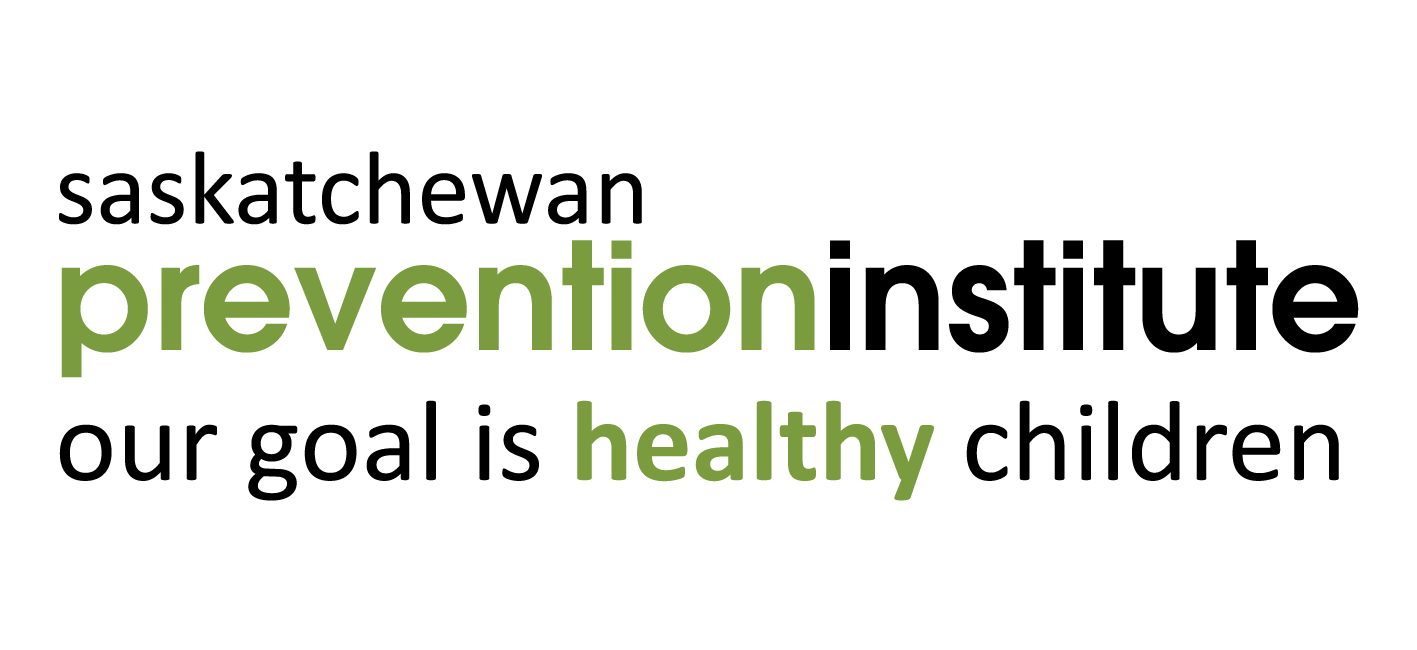- Sort by Popularity (sales)
- Display 15 Products per page
-
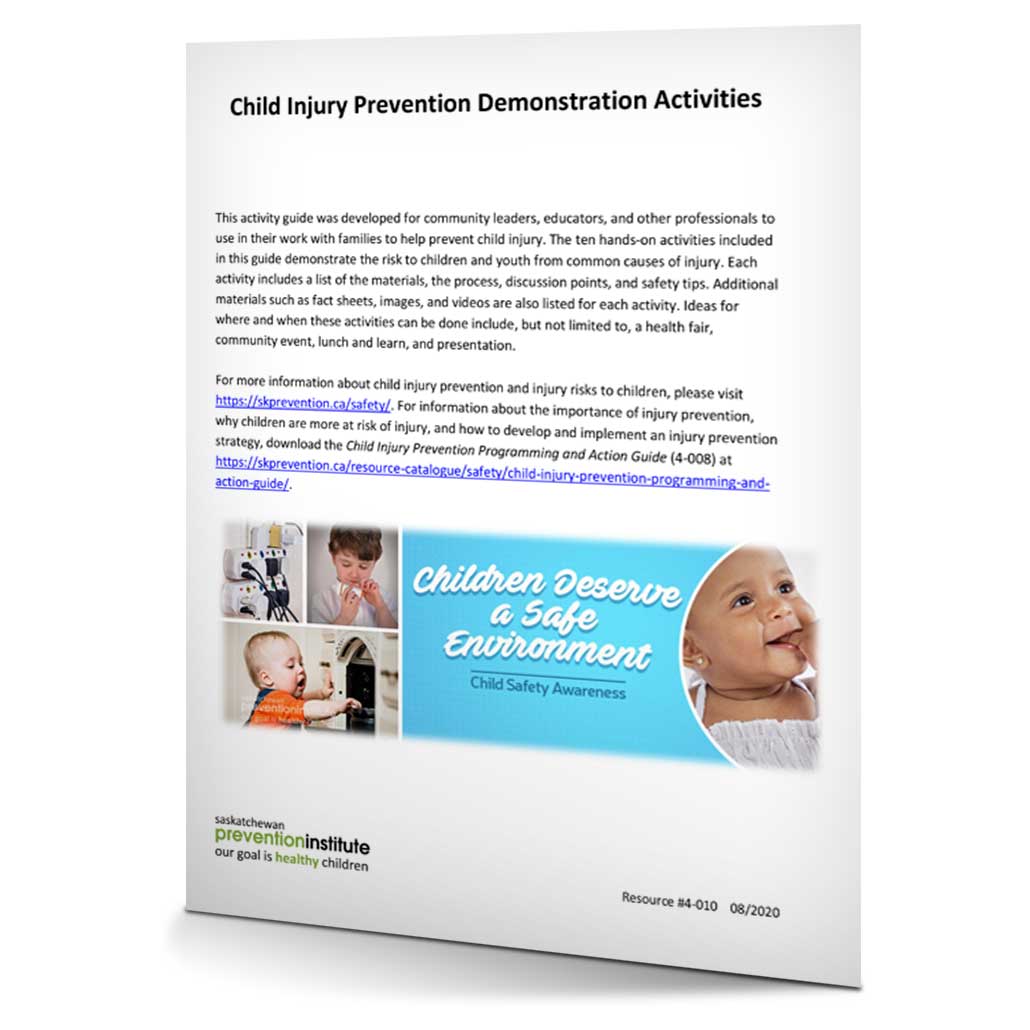
Child Injury Prevention Demonstration Activities
Guide, 2020
This activity guide was developed for community leaders, educators, and other professionals to use in their work with families to help prevent child injury. The ten hands-on activities included in this guide demonstrate the risk to children and youth from common causes of injury. The causes of injury addressed in the guide include burns, choking, poisoning, scalds, traumatic brain injury, cycling-related injury, drowning, and motor-vehicle injury. Each activity includes a list of the materials, the process, discussion points, and safety tips. Additional materials such as fact sheets, images, and videos are also listed for each activity.
SKU: 4-010 -

Ready to Ride?
Booklet, Revised 2021
Children (ages 5-12), their caregivers, and educators can find out how to stay safe while biking. This booklet answers the following questions: why bike safety is important, what should I wear when I ride my bike, why should I wear a bike helmet, what’s the right bike for me, and what road rules should I know?
SKU: 4-224 -
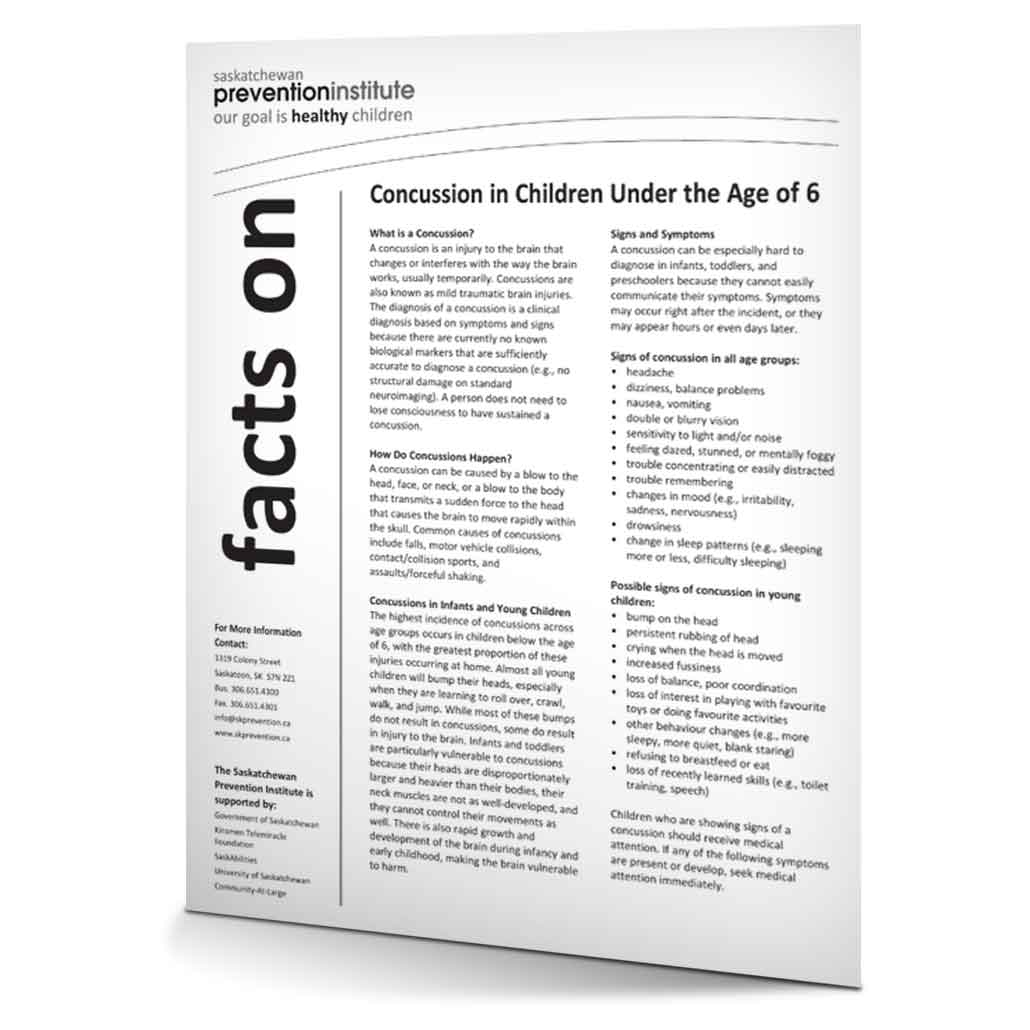
Concussion in Children Under the Age of 6
Fact Sheet, 2019
Although the majority of concussions are minor, they can have serious outcomes for children under the age of six. This fact sheet defines what a concussion is, how concussions happen, and the signs and symptoms of a concussion. Information on treatment, potential long-term outcomes, and prevention is also provided. Aimed at health professionals and service providers who work with families.
SKU: 4-001 -

Brain Injury Due to Trauma
Fact Sheet, Revised 2019
Explains the different ways the brain can be injured, including closed, open, and crushing head injuries. Information about effects on the brain and how to prevent this type of injury is also shared.
SKU: 4-004 -
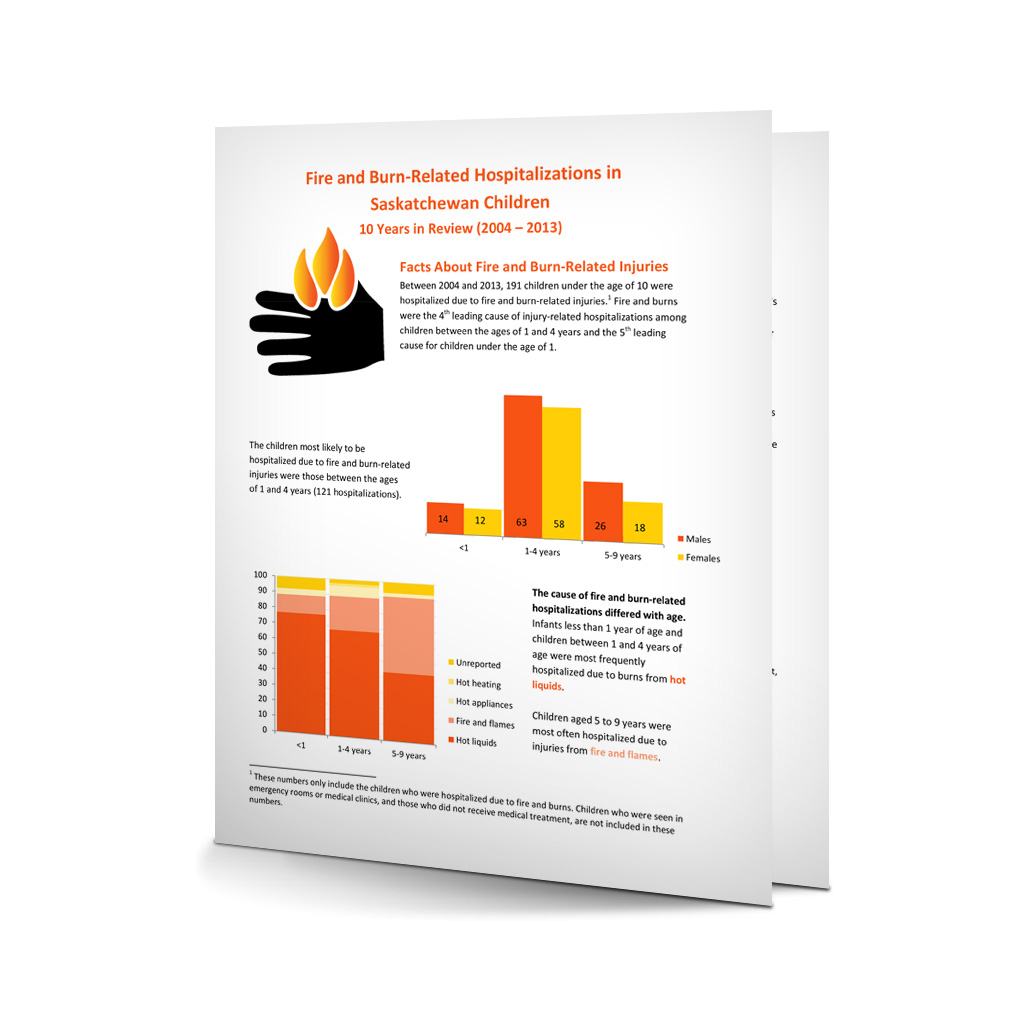
Fire and Burn-Related Hospitalizations Summary
Fact Sheet, 2018
This summary provides information about fire and burn-related hospitalizations for Saskatchewan children under the age of 10, between 2004 and 2013. Information about how to prevent fire and burn-related injuries in children is also provided.
SKU: 4-405 -
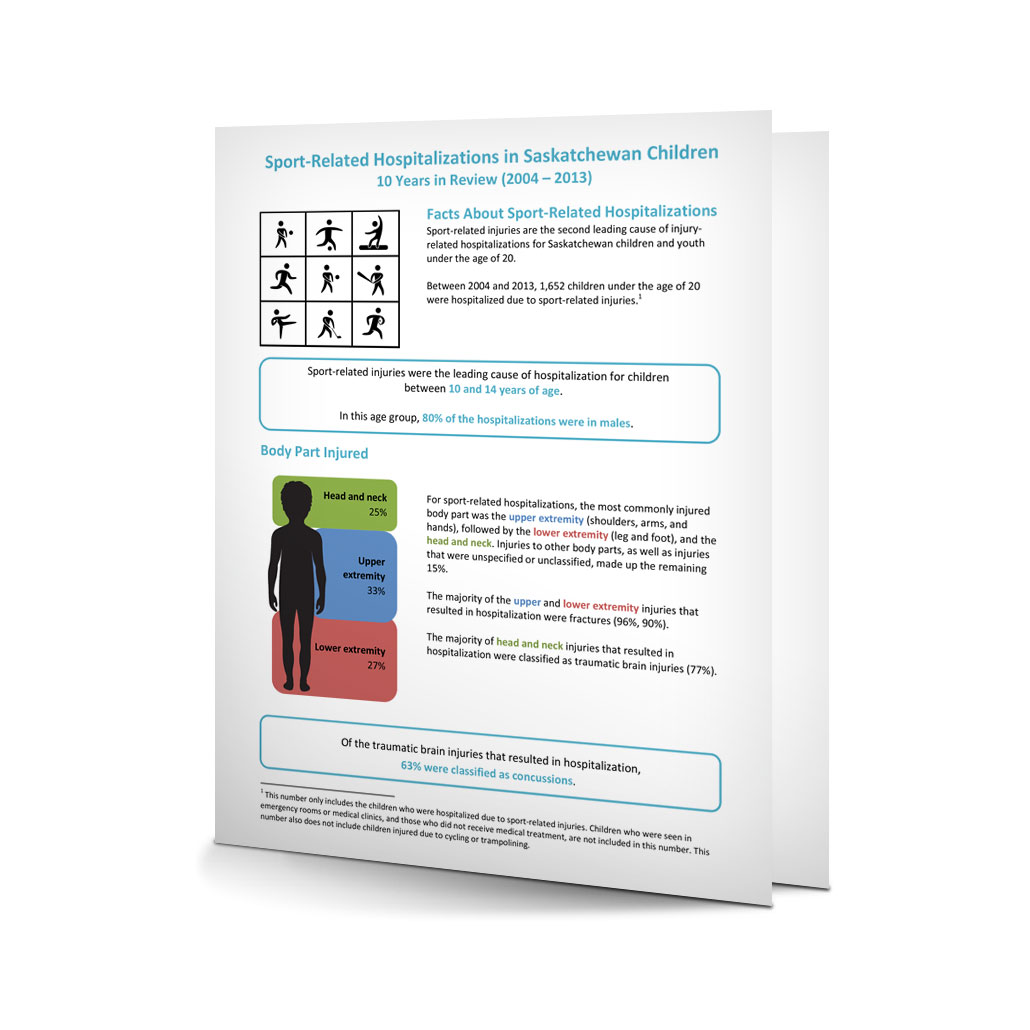
Sport-Related Hospitalizations Summary
Fact Sheet, 2018
This summary provides information about sport-related hospitalizations for Saskatchewan children under the age of 20, between 2004 and 2013. Information about how to prevent sport-related injuries in children is also provided.
SKU: 4-403 -
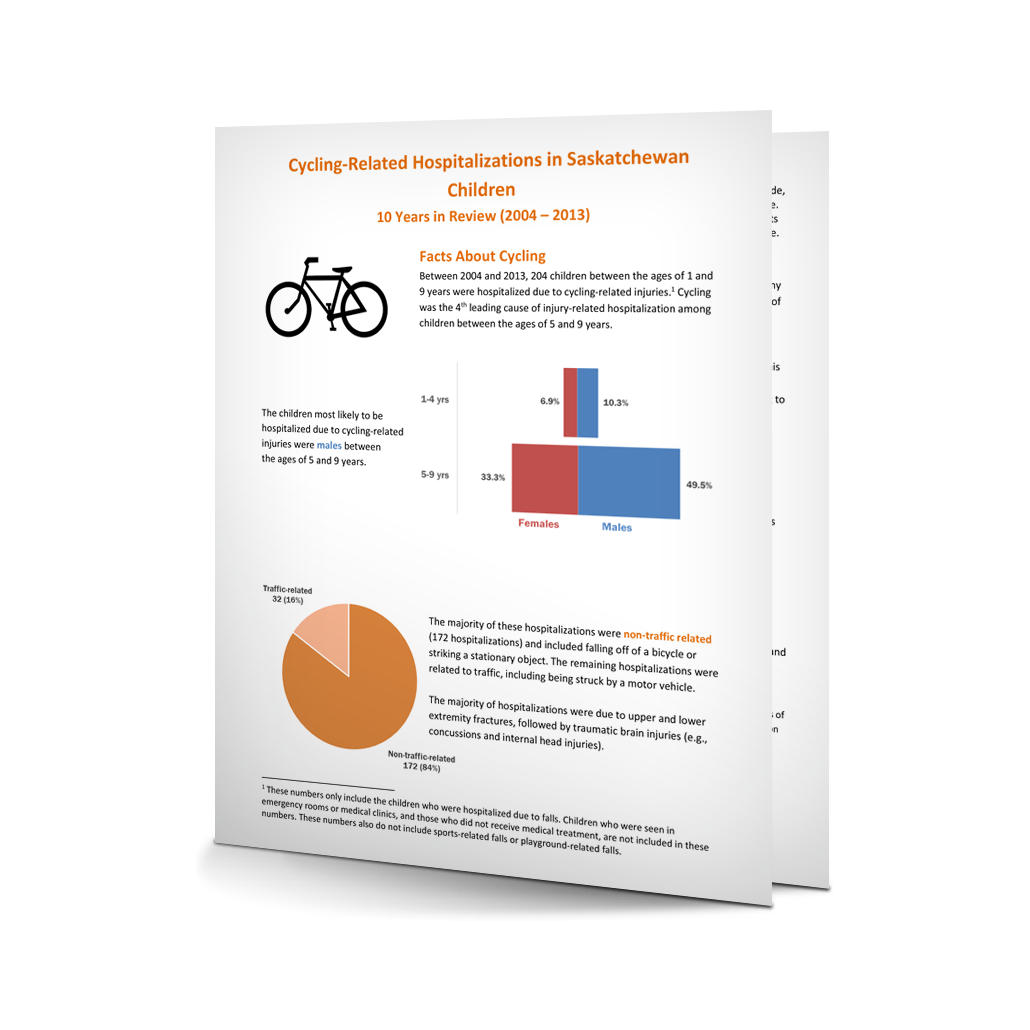
Cycling-Related Hospitalizations Summary
Fact Sheet, 2018
This summary provides information about cycling-related injury hospitalizations for Saskatchewan children under the age of 10, between 2004 and 2013. Information about how to prevent cycling-related injuries in children is also provided.
SKU: 4-404 -
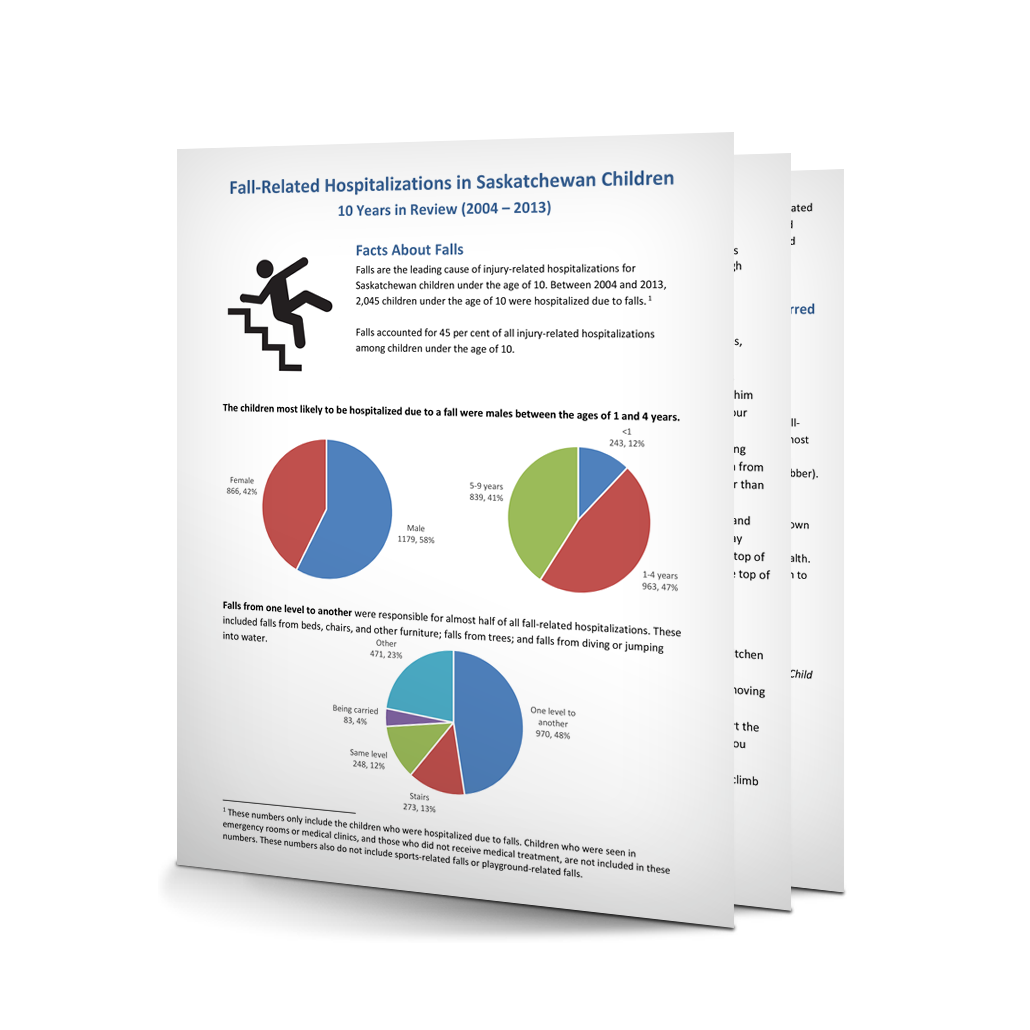
Fall-Related Hospitalizations Summary
Fact Sheet, 2018
This summary provides information about fall-related hospitalizations for Saskatchewan children under the age of 10, between 2004 and 2013. Information about how to prevent fall-related injuries in children is also provided.
SKU: 4-402 -
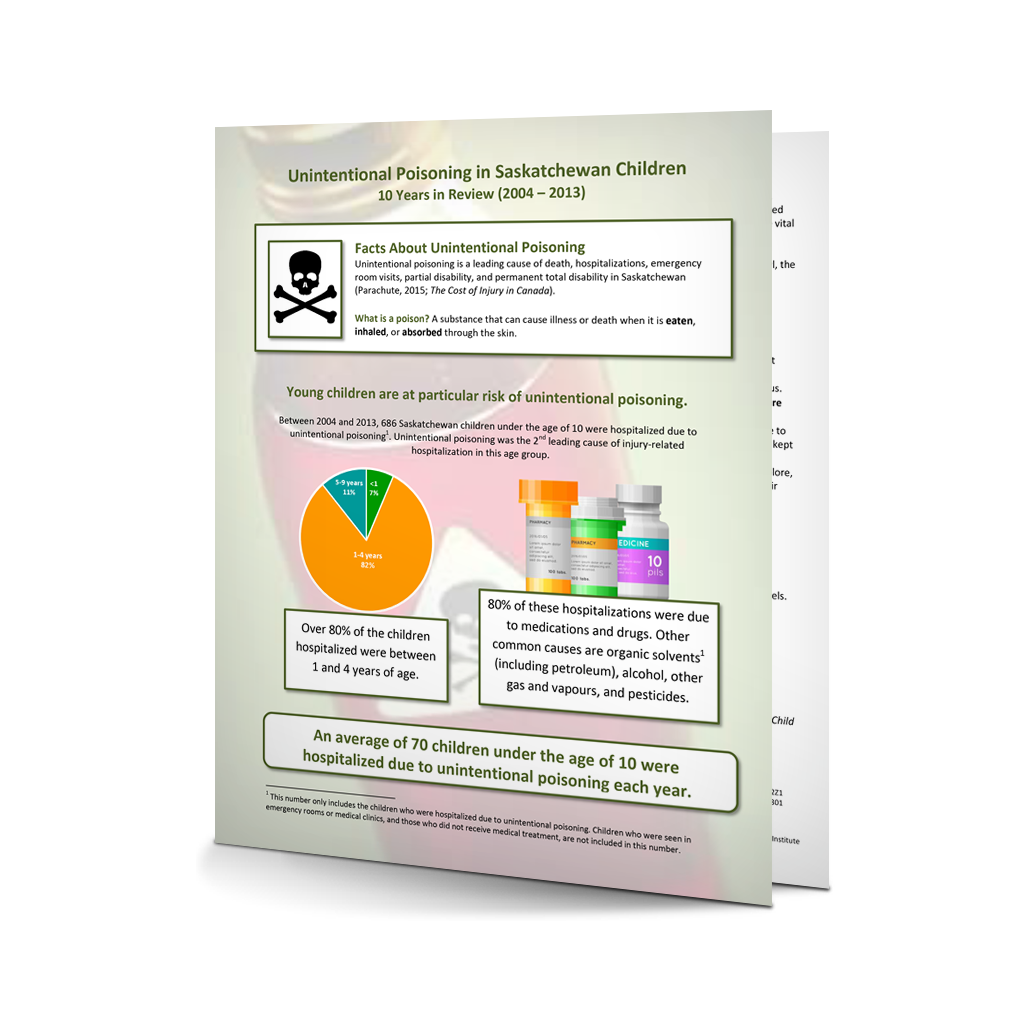
Unintentional Poisoning Summary and Prevention Tips
Fact Sheet, 2018
This summary provides information about unintentional poisoning-related hospitalizations for Saskatchewan children under the age of 10, between 2004 and 2013. Information about how to prevent unintentional poisonings in children is also provided.
SKU: 4-401 -
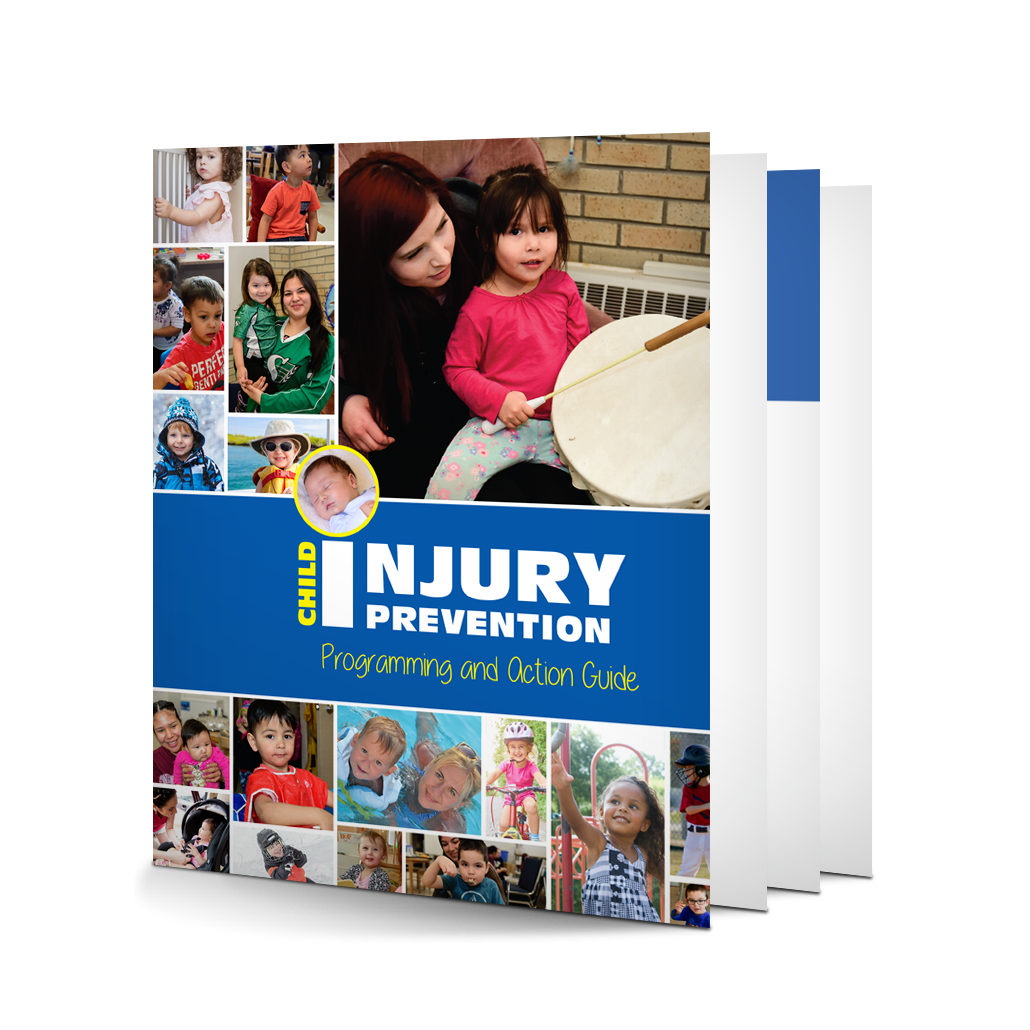
Child Injury Prevention Programming and Action Guide
Guide and Manual, 2017
The Child Injury Prevention Programming and Action Guide provides information about the importance of injury prevention, why children are more at risk of injury, and how to develop and implement an injury prevention strategy. This resource was developed for community-based programs to use in their work with families to prevent child injury, but it will be of interest to anyone who works with caregivers and children. Adapted with permission from Parachute Canada’s Introduction to Child Injury Prevention (ICIP) online resource.
SKU: 4-008 -
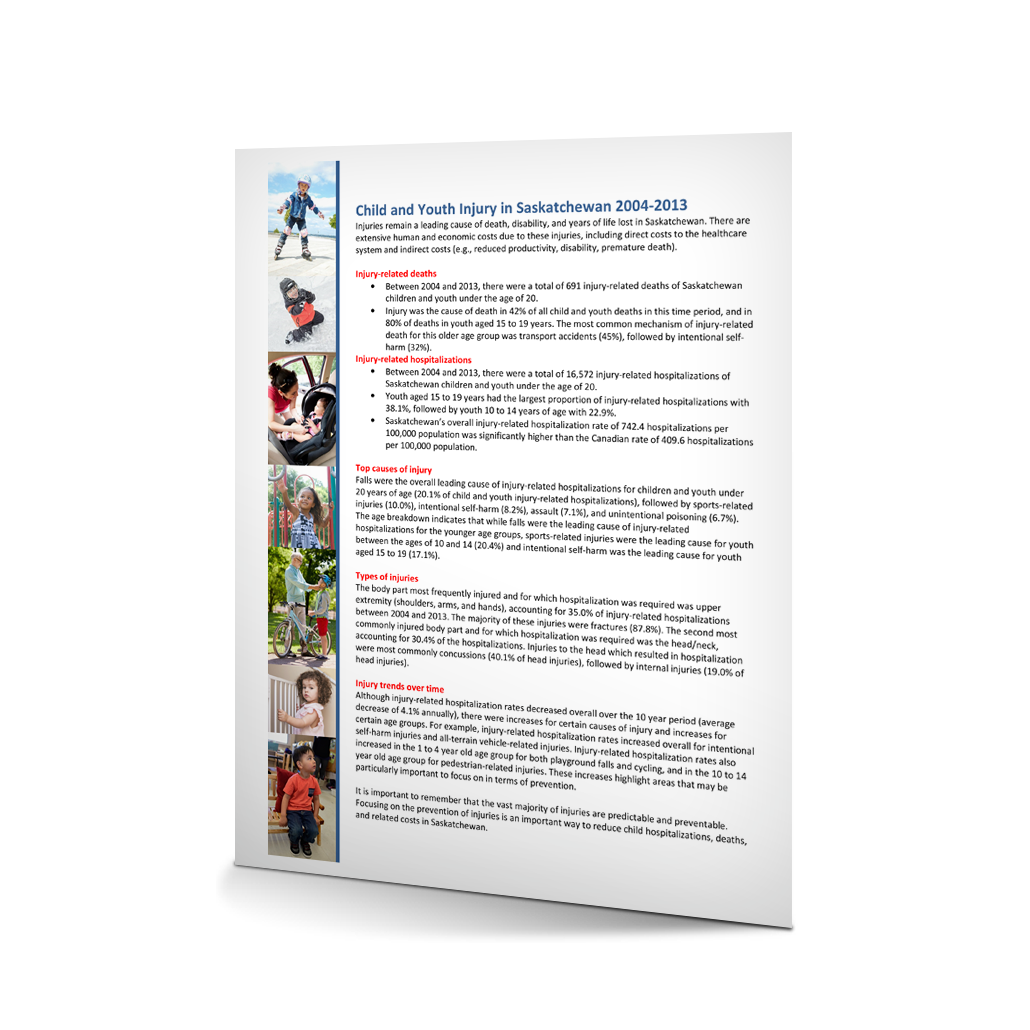
Child and Youth Injury in Saskatchewan 2004-2013 Summary
Report, 2017
This summary is based on the report, “Child and Youth Injury in Saskatchewan 2004-2013” (resource 4-007). It provides information about injury-related deaths and hospitalizations of Saskatchewan children and youth, including the top causes of injury-related hospitalizations and types of injuries.
SKU: 4-009 -
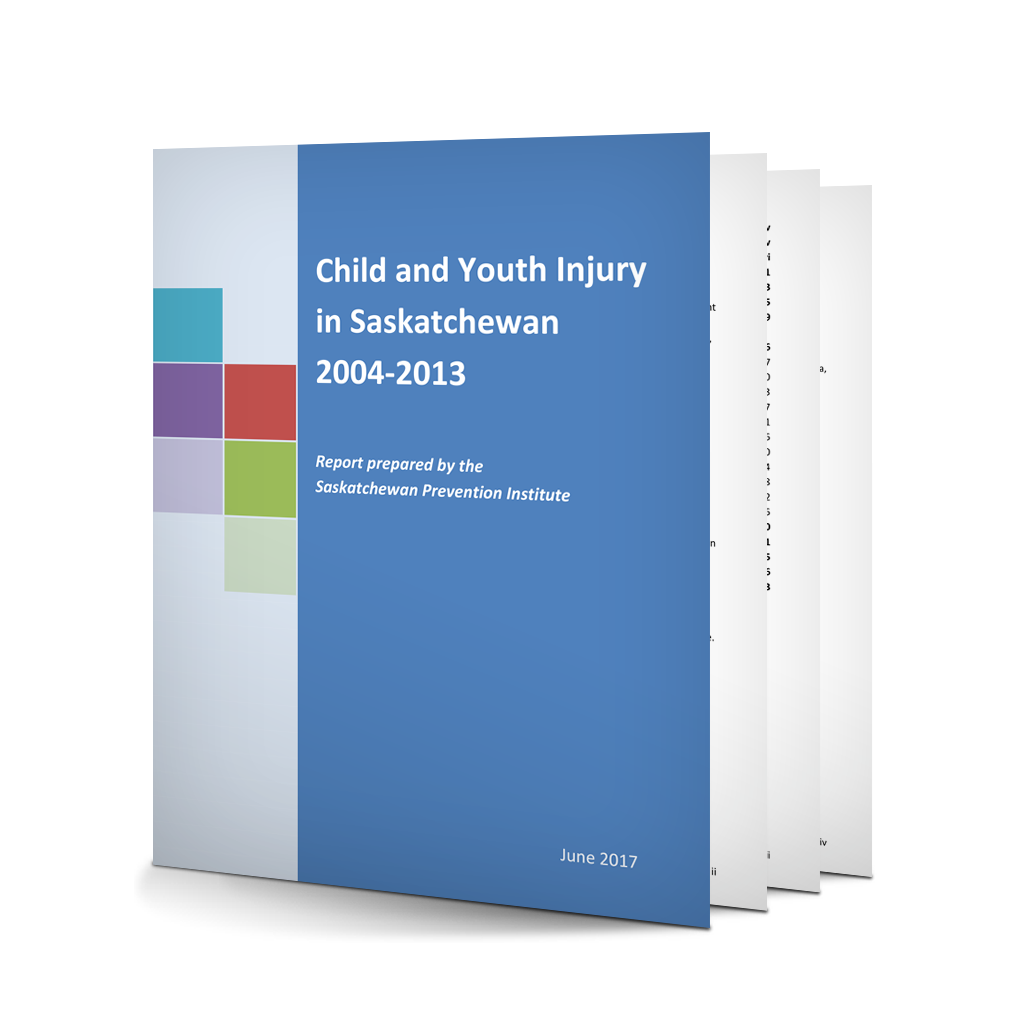
Child and Youth Injury in Saskatchewan 2004-2013
Report, 2017
Child and Youth Injury in Saskatchewan 2004-2013 serves as an update to the Child and Youth Injury in Saskatchewan 1995-1999 report completed by the Saskatchewan Prevention Institute in 2002. The current report examines injury-related deaths and hospitalizations of Saskatchewan children and youth less than 20 years of age during the 10 year period of 2004 to 2013. Injury-related deaths and hospitalizations are examined overall, followed by a more detailed analysis of the ten most common causes of injury-related hospitalizations, including both intentional and unintentional injuries. The ten most common causes discussed in this report are falls, sports, intentional self-harm, assault, poisoning, motor vehicle occupant, cycling, all-terrain vehicle, and fire and burns.
SKU: 4-007 -
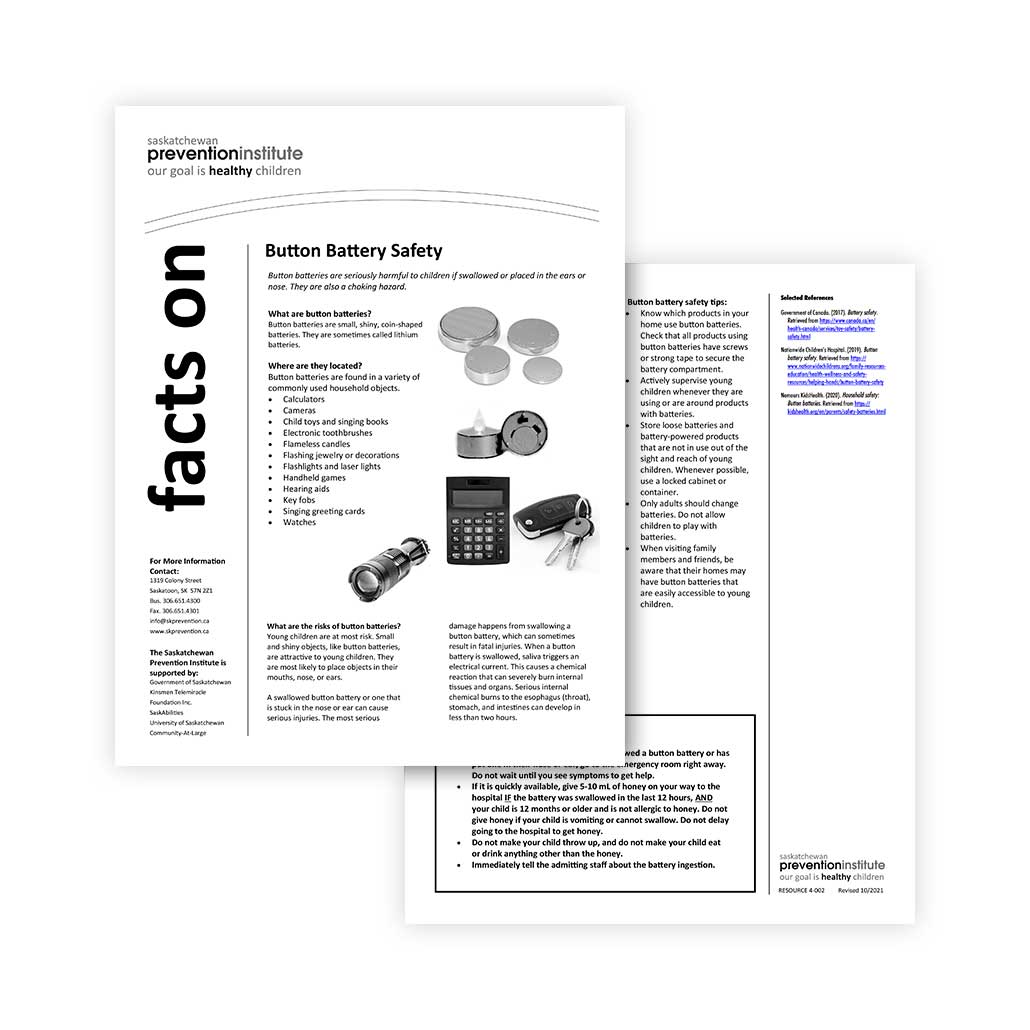
Button Battery Safety
Fact Sheet, Revised 2021
This fact sheet provides information about what button batteries are, how they can be harmful to the health of children, safety tips, and what to do if a child swallows a button battery.
SKU: 4-002 -
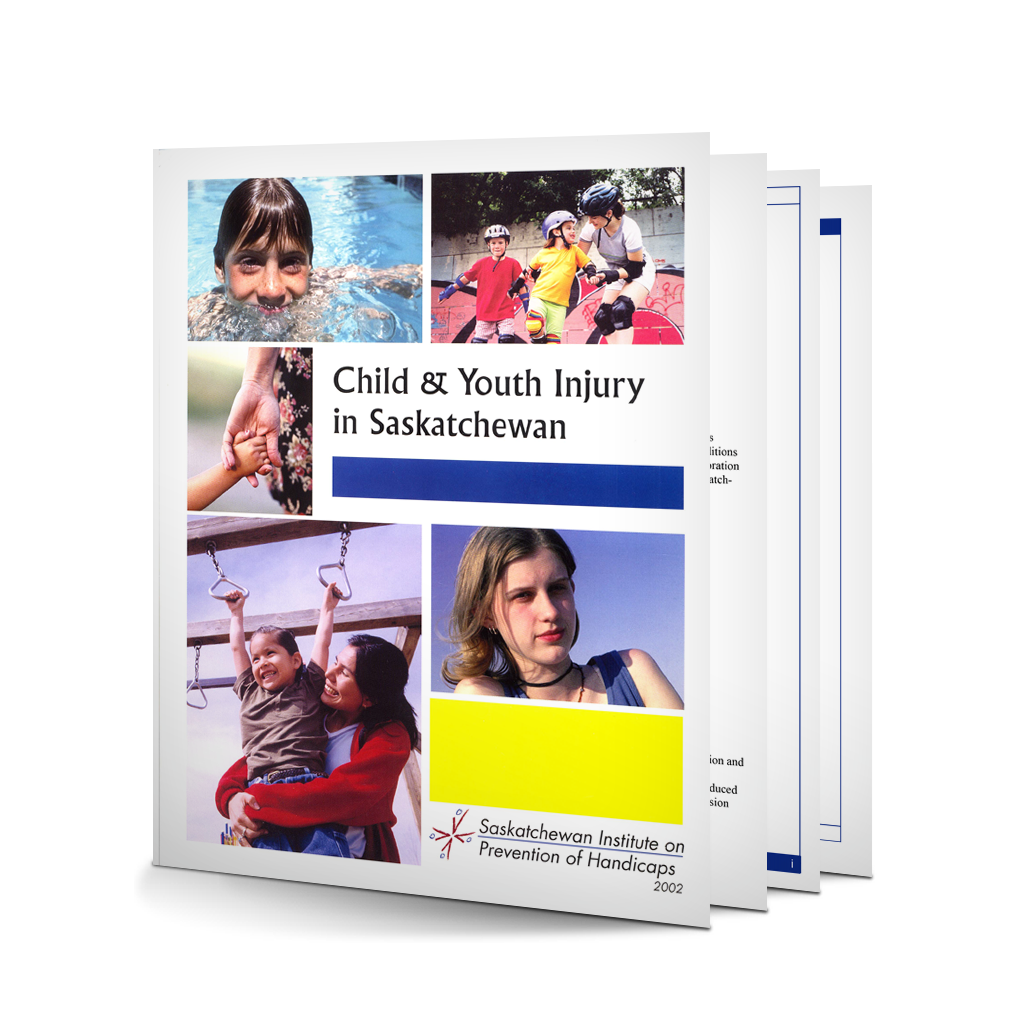
Child and Youth Injury in Saskatchewan 1995-1999
Report, 2002
This report focuses on the most significant causes of injury-related hospitalizations and deaths for Saskatchewan children and youth. The most significant causes discussed in this report are falls, motor vehicle traffic, self-injury, drowning and choking, fire and flame, poison, motor vehicle pedestrian, sports, and assaults.
SKU: 4-006 -
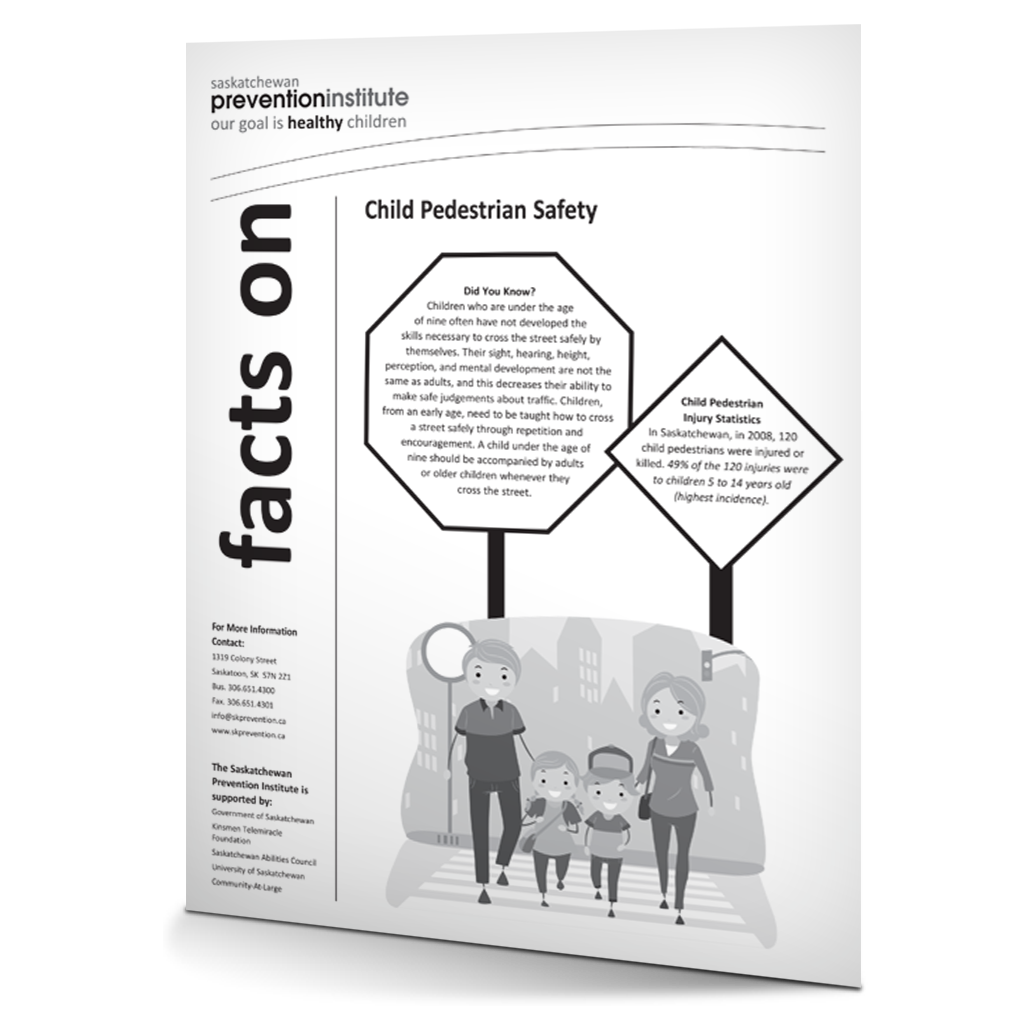
Child Pedestrian Safety
Fact Sheet, Revised 2015
This fact sheet provides tips and facts on child pedestrian safety.
SKU: 4-021
